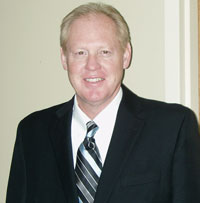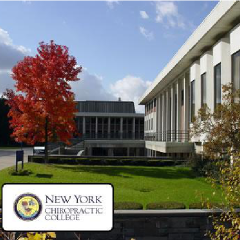Some practice problems stand out where you can see them; others are subtle, like a low-level pain that comes and goes.
Common ones faced by chiropractors include:
• Financial underperformance
• Persistent claim denials
• Potential for audits and payback demands
• Excessive time per visit
• Inefficient office processes
• Slow practice growth.
If you suspect that your clinic needs help and you don’t take measures to identify the issues, they are never going to get fixed and you’ll just keep living with the negative impact. The following brief examples recount outcomes experienced quickly by three doctors who decided to act.
Each case entailed an on-site visit to the practice by a consultant who performed a thorough practice analysis, identified problem areas and suggested action plans to address specific needs. Along with the initial corrective “adjustments,” extended relationships were established that include regularly scheduled calls to review progress and update the action plans, to identify and work towards milestones, and to confirm that new coding and document practices introduced to the practice remain compliant while maximizing revenue per patient visit.
It’s a lot like engaging a personal trainer to get your body in shape….
Compliance
Starting her career as a registered nurse, Dr. Deb Skrzynecki shifted to chiropractic following successful treatment for a back injury that she suffered in her work. She attended Palmer College of Chiropractic in Davenport, Iowa, spent 17 years in a multi-doctor practice following graduation and, in 2000, opened Skrzynecki Chiropractic in Toledo, Ohio, with one assistant.
Dr. Deb stayed away from coaches, she says, because she didn’t want anybody telling her how to deal with patients and how to run her practice. Nevertheless, with her extensive medical and chiropractic background, she became concerned about compliance issues in the increasingly complex healthcare environment.
She selected a consultant that she encountered at a continuing education seminar, impressed by the breadth of coding and documentation knowledge on display as well as the strength of commitment to the chiropractic profession. She worked out the issues she wanted to deal with over the phone, after which the consultant arrived at the office to address them. The main objectives:
• Better, more direct documentation
• Identifying overlooked billing opportunities
• More effective collection procedures
• Increasing revenue without increasing patient load
• Smoother patient flow.
With these objectives in mind, the consultant arrived on site to perform a comprehensive analysis of her coding and documentation procedures and business practices and to devise a near-term, mid-term and long-term plan of action. Currently, she is executing that plan, secure in her compliance plan, and already experiencing results that will ultimately generate the time and resources to allow her to pursue her eleemosynary interests: establishing a holistic women’s health center, and providing chiropractic help to the working poor.
Examining the Practice, Close Up
Classmates Dr. Nathan Sikora and Dr. Michael James opened their Center for Holistic Medicine in East Liverpool, Ohio, in 2005, following their graduations from New York Chiropractic College. True to the name they chose, they offer a full range of services to all types of patients, from no-pain/wellness programs to severe pain cases, averaging about 30 per day.
The doctors used a number of coaches since the practice debut, most of which focused on getting more patients or bettering the patient retention rate. All operated remotely and, while they seemed effective in their respective areas of focus, none addressed the basic practice problems:
• Inefficient systems and poorly defined personnel responsibilities
• Communications with patients and staff
• Better communication with insurers, including more effective documentation
• How to increase per-patient revenue without squeezing the people
• How to establish a program for positive growth.
Dr. Nathan established a relationship with a consulting group following his attendance at a seminar, at which he was impressed with the way in which the consultants view the profession and its issues. He was particularly taken with the approach in which consultants would actually visit a practice, perform hands-on analyses of its policies and procedures; identify what was being done right and what was wrong; execute a probing examination of coding and document practices; and develop a treatment plan.
“In the on-site visit, the consultant was able to examine up-close what we were doing in detail and show us how to make changes quickly,” Dr. Sikora says. “We saw positive results almost immediately and we have an ongoing relationship for supporting our continuing success.”
I can get paid for that?
Dr. April Macary opened a practice in Columbus, N.C., in 2004, subsequently moving her primary location to Ashville, while maintaining the initial office as a satellite. Currently, she practices both as Awakening Heart and as Macary Family Chiropractic, and there is a special emphasis on family: a large component of her patient load is comprised of pregnant mothers coping with the back strains typical of gestational progression. Not surprisingly, she works with many children as well and, by design, with very few Personal Injury cases.
Only three years out of Sherman College of Chiropractic, Dr. April centralized her activities in Asheville in 2007. Seeing about 30 patients per day allowed her time to analyze her efforts and she quickly concluded that she was not coding all that she should, and that, not infrequently, she was not coding correctly on certain treatments that she did bill.
A former classmate of the doctor had joined a consulting group and, through this connection, she set up a relationship that commenced with an on-site visit to her practice. During that visit, the classmate-now-consultant performed a detailed analysis of her business processes and coding practices. A number of problems emerged:
• Inefficient procedures and forms were being used throughout the offices
• Confusion about codes and their application
• Lack of confidence led to missed revenue opportunities
• Too many instances of incorrect coding of treatment
• Potential areas for denial/audit/payback risk.
In the on-site visit, heavy emphasis was placed on how to apply the billing codes in documenting treatment for full, fair compensation. Dr. Macary now codes with confidence and, with the help of her consultant, she is currently revising all of the forms in her office to achieve greater clarity, better workflow and more effective management.
She spends more time with each patient because her documentation is more streamlined, reducing the amount of time devoted to paperwork. Practice revenue increased as she began coding and billing fully and fairly for all of the treatment she provided on each patient visit.
“In school we learned to heal,” she says. “We were not taught how to operate a business but, to be successful, you have to be businesslike as well as professional.”
Personal training for clinics?
So your practice consultant can, indeed, be likened to a skilled personal trainer that you retain to whip your body into top physical condition. Think of these resemblances:
• Each engagement is unique, so each training program is unique.
• The best program is set up for the long term to provide motivation, guidance and support.
• Workflow is organized to accomplish more in the same amount of time and to maximize effect versus effort. (Think same schedule, more patients, and more revenue per patient visit.)
• Strong, healthy practices (bodies) with minimal risk of denials or audits (injuries) derive from consistently performing each activity in the right way.
• Like disciplined physical training, proper coding and documentation builds the strength and endurance your practice needs to prevail and profit.
 Contact Bharon Hoag at 1-866-286-5315, ext. 604; email [email protected]; or visit www.acomhealth.com.
Contact Bharon Hoag at 1-866-286-5315, ext. 604; email [email protected]; or visit www.acomhealth.com.

 TAC:
TAC:

 Contact Bharon Hoag at 1-866-286-5315, ext. 604; email
Contact Bharon Hoag at 1-866-286-5315, ext. 604; email 
 New York Chiropractic College (NYCC) now offers a nutrition program structured to prepare graduates for a wide range of clinical, consulting and industry settings, emphasizing an integrative approach to healthcare aimed at providing a professionally oriented curriculum.
New York Chiropractic College (NYCC) now offers a nutrition program structured to prepare graduates for a wide range of clinical, consulting and industry settings, emphasizing an integrative approach to healthcare aimed at providing a professionally oriented curriculum.